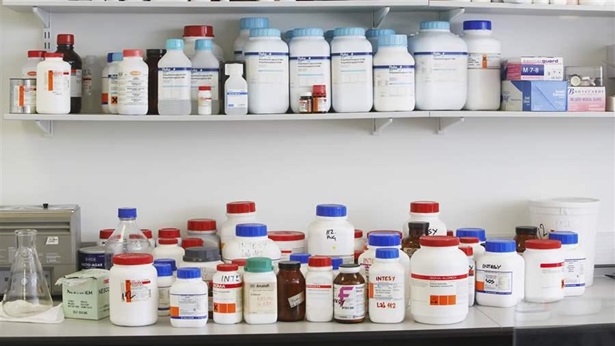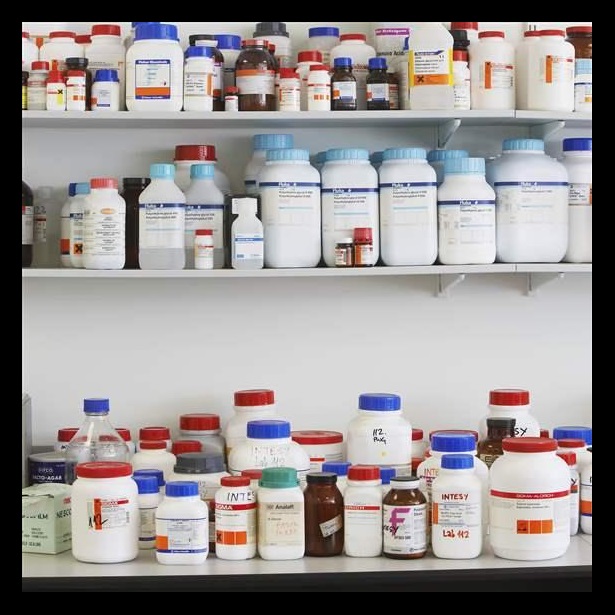FDA Issues Strong Guidance on Prescription Requirement for Drug Compounders
Agency’s latest step in implementing federal law will safeguard public health

Traditional compounders—usually pharmacies and doctors’ offices—must receive a valid prescription in order to dispense compounded drugs.
© francisblack / Getty Creative
On Dec. 28, 2016, the U.S. Food and Drug Administration (FDA) finalized a guidance document interpreting provisions of federal law that govern compounded medications—customized drugs made by pharmacists or physicians rather than pharmaceutical manufacturers.1 “Prescription Requirement Under Section 503A of the Federal Food, Drug, and Cosmetic Act” clarifies the law’s requirement that traditional compounders dispense compounded products only upon receipt of a valid prescription, an important mechanism to protect public health.
Compounded medications serve an important role in medical care. However, because they are not subject to FDA’s approval process and manufacturing quality standards, they also present a higher level of risk for patients than manufactured drugs. Under a federal law passed in 2013, drugs can be compounded by two types of facilities. Traditional compounders, which are licensed and regulated primarily by states, are typically pharmacies or physicians’ offices that produce drugs in community practice or hospital settings. They are subject to the requirements in a section of the federal Food, Drug, and Cosmetic Act known as 503A. In contrast, outsourcing facilities can produce stock supplies of compounded drugs for health care providers’ offices and are subject to more robust quality standards, product labeling requirements, and adverse events reporting. They are regulated under Section 503B of the act.
Because outsourcing facilities can produce and distribute drugs without a prescription while traditional compounders cannot, FDA calls the prescription requirement a “critical mechanism” for distinguishing traditional compounders from drugmakers that must comply with higher manufacturing standards. The final guidance document retains many of the key provisions of the April 2016 draft document—which Pew commented on both independently and jointly with other organizations2—but there are important differences.
Provisions to guide compounders include:
- Valid prescription: The guidance requires that, for compounders subject to 503A, a prescription identify the patient for whom a compounded drug has been prescribed and document the prescriber’s determination that a compounded drug is necessary for the patient. However, detailed instructions for how a prescriber should document the need for a compounded product were not included in the final version. The guidance instead states that FDA will describe its policies regarding this provision in a future document.
- Anticipatory compounding: Federal law permits traditional compounders to produce “limited quantities” of compounded drugs in anticipation of receiving a prescription. The final guidance sets rules for such occasions, requiring a history of valid prescriptions and an established relationship between the compounder and the physician or patient. In these circumstances, FDA will not question whether drugs compounded in anticipation of a prescription are made in limited quantity as long as the compounder holds no more than a 30-day supply, based on the number of valid prescriptions the compounder has received in a 30-day period within the past year. The final guidance describes this measure as an “interim compliance policy,” suggesting that the agency will set additional rules around limited quantity at some point in the future.
- Distribution: The final guidance specifies that compounders must have a valid prescription order before a compounded drug leaves the facility. It retains the draft guidance’s caution that although some states permit prescriptions that do not name specific individuals, federal law requires an individual name before a compounded product can be distributed.
- Office stock: The guidance affirms that products compounded for office stock (in other words, without an individual prescription) must be made at FDA-registered outsourcing facilities. Like the draft, the final guidance notes that although compounders regulated under 503A are prohibited from producing office stock, they can nevertheless be responsive to clinician needs, because the anticipatory compounding provisions reduce the time it takes to provide a compounded drug once a prescription is received.
- Record keeping: The final guidance eliminates the draft’s record-keeping provisions, which had said that compounders should retain records demonstrating their compliance with the prescription requirement and the basis for any anticipatory compounding, defined above. Prescription records—and FDA access to those records—are necessary for FDA to verify compliance with its guidance. Although this change does not alter FDA’s authority to require that compounders demonstrate compliance with federal law, it underscores the important role that states play in ensuring that compounders retain appropriate prescription records and make them available to FDA.
Contamination of compounded products has resulted in numerous illnesses and deaths in the United States in recent years.3 Compounded drugs must be made under the quality standards appropriate to the type of compounding being performed in order to safeguard public health. FDA’s final prescription requirement guidance is an important step for minimizing these risks in the future.
Elizabeth Jungman directs The Pew Charitable Trusts’ work on public health.
- Food and Drug Administration, “Prescription Requirement Under Section 503A of the Federal Food, Drug, and Cosmetic Act” (December 2016), http://www.fda.gov/downloads/Drugs/GuidanceComplianceRegulatoryInformation/Guidances/UCM496286.pdf.
- The Pew Charitable Trusts, “FDA Proposals for Compounded Drugs Draw Broad Support” (July 2016), http://www.pewtrusts.org/en/research-and-analysis/speeches-and-testimony/2016/07/fda-proposals-for-compounded-drugs-draw-broad-support.
- The Pew Charitable Trusts, “U.S. Illnesses and Deaths Associated With Compounded Medications or Repackaged Medications” (October 2015), http://www.pewtrusts.org/en/multimedia/data-visualizations/2014/us-illnesses-and-deaths-associated-with-compounded-medications.


America’s Overdose Crisis
Sign up for our five-email course explaining the overdose crisis in America, the state of treatment access, and ways to improve care
Sign up

U.S. Illnesses and Deaths Tied to Compounded or Repackaged Medications











